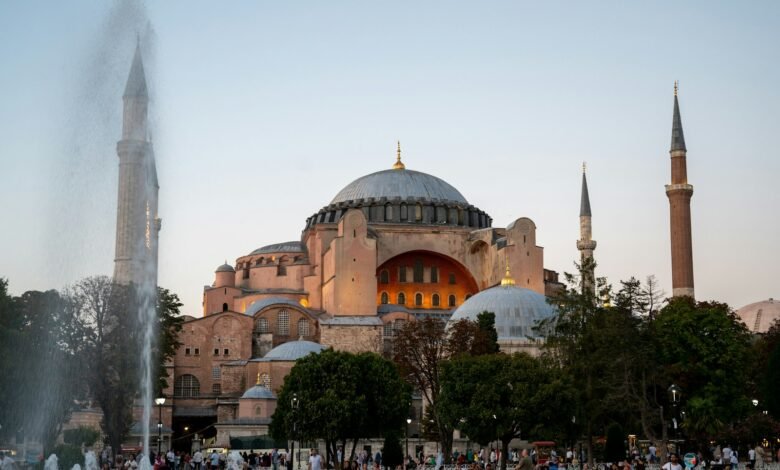
Hagia Sophia, located in the heart of Istanbul, is one of the most iconic landmarks in the world. With its breathtaking architecture and rich historical significance, it has stood as a testament to the cultural and religious transformations of the region over centuries. From a Byzantine cathedral to an Ottoman mosque and now a mosque once again, Hagia Sophia reflects the layers of history that have shaped Istanbul into the vibrant city it is today.
Early Beginnings: A Byzantine Marvel
- Construction: Hagia Sophia was originally built as a cathedral in 537 AD during the reign of Emperor Justinian I of the Byzantine Empire.
- Architectural Feat: Designed by Greek architects Isidore of Miletus and Anthemius of Tralles, it was celebrated as a masterpiece of Byzantine architecture and engineering.
- Purpose: It served as the largest Christian church of the Byzantine Empire and was the religious center of Eastern Orthodox Christianity for nearly 1,000 years.
Ottoman Era: Transformation into a Mosque
- Conquest of Constantinople: In 1453, Sultan Mehmed II conquered Constantinople (modern-day Istanbul) and converted Hagia Sophia into a mosque.
- Islamic Influence:
- Minarets were added for the call to prayer.
- Islamic art and calligraphy, including verses from the Quran, were incorporated into the interior.
- Christian mosaics were either covered or removed.
- Symbol of Unity: Hagia Sophia became a symbol of the Ottoman Empire’s power and religious devotion.
Modern Era: A Museum and Beyond
- Secularization: In 1935, under Mustafa Kemal Atatürk, the founder of modern Turkey, Hagia Sophia was transformed into a museum. This move aimed to celebrate its historical and architectural significance beyond religious affiliations.
- UNESCO World Heritage Site: Recognized as a cultural treasure, Hagia Sophia attracted millions of visitors annually as a museum.
- Reconversion to a Mosque: In 2020, the Turkish government officially restored Hagia Sophia’s status as a mosque. It remains open to visitors of all faiths, showcasing its historical layers and cultural importance.
Architectural Highlights
- Dome: The massive central dome, with its seemingly floating design, is an engineering marvel of its time.
- Mosaics: Stunning Byzantine mosaics depicting Christian figures, many of which have been restored or uncovered.
- Minarets: Added during the Ottoman period, these elegant towers define the mosque’s skyline.
- Calligraphy: Large round medallions inscribed with the names of Allah, Prophet Muhammad (PBUH), and the Rashidun Caliphs.
Cultural and Religious Significance
Hagia Sophia is not just a building; it is a symbol of coexistence and the blending of cultures, religions, and empires. It has served as a place of worship for both Christians and Muslims and continues to inspire awe with its timeless beauty.
Visiting Hagia Sophia Today
- Location: Situated in Sultanahmet Square, Istanbul, it is easily accessible from all parts of the city.
- Admission: Entry is free for worshippers; visitors can explore its history and architecture.
- Dress Code: Modest clothing is recommended, as it is an active mosque.
Conclusion
Hagia Sophia is a must-visit for history enthusiasts, architects, and travelers seeking to understand the cultural and religious tapestry of Istanbul. Its enduring legacy as a cathedral, mosque, and museum makes it a timeless icon that continues to inspire millions worldwide.



